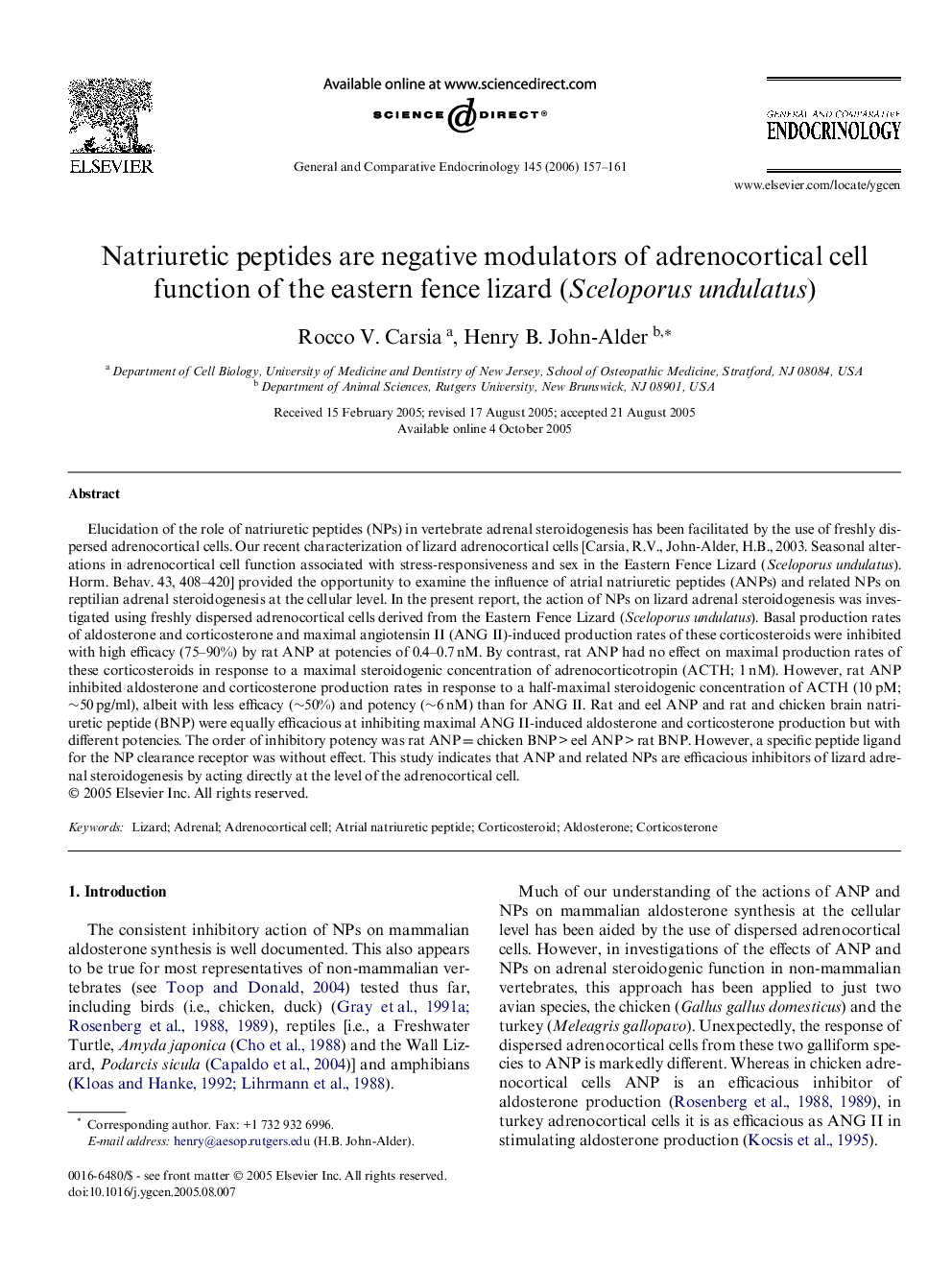| Article ID | Journal | Published Year | Pages | File Type |
|---|---|---|---|---|
| 2802242 | General and Comparative Endocrinology | 2006 | 5 Pages |
Elucidation of the role of natriuretic peptides (NPs) in vertebrate adrenal steroidogenesis has been facilitated by the use of freshly dispersed adrenocortical cells. Our recent characterization of lizard adrenocortical cells [Carsia, R.V., John-Alder, H.B., 2003. Seasonal alterations in adrenocortical cell function associated with stress-responsiveness and sex in the Eastern Fence Lizard (Sceloporus undulatus). Horm. Behav. 43, 408–420] provided the opportunity to examine the influence of atrial natriuretic peptides (ANPs) and related NPs on reptilian adrenal steroidogenesis at the cellular level. In the present report, the action of NPs on lizard adrenal steroidogenesis was investigated using freshly dispersed adrenocortical cells derived from the Eastern Fence Lizard (Sceloporus undulatus). Basal production rates of aldosterone and corticosterone and maximal angiotensin II (ANG II)-induced production rates of these corticosteroids were inhibited with high efficacy (75–90%) by rat ANP at potencies of 0.4–0.7 nM. By contrast, rat ANP had no effect on maximal production rates of these corticosteroids in response to a maximal steroidogenic concentration of adrenocorticotropin (ACTH; 1 nM). However, rat ANP inhibited aldosterone and corticosterone production rates in response to a half-maximal steroidogenic concentration of ACTH (10 pM; ∼50 pg/ml), albeit with less efficacy (∼50%) and potency (∼6 nM) than for ANG II. Rat and eel ANP and rat and chicken brain natriuretic peptide (BNP) were equally efficacious at inhibiting maximal ANG II-induced aldosterone and corticosterone production but with different potencies. The order of inhibitory potency was rat ANP = chicken BNP > eel ANP > rat BNP. However, a specific peptide ligand for the NP clearance receptor was without effect. This study indicates that ANP and related NPs are efficacious inhibitors of lizard adrenal steroidogenesis by acting directly at the level of the adrenocortical cell.
